I understand that if I want to set all of the subplot titles then I can do that when I declare the figure.
import pandas as pd
import plotly.graph_objs as go
from plotly.subplots import make_subplots
fig = make_subplots(
###
subplot_titles=['Plot 1', 'Plot 2', 'Plot 3', 'Plot 4', etc.]
)
However, I create each subplot graph within a loop, and I think it would be easiest to set each subplot's title during that process. In my case, I created a groupby object based on date, and then I loop through each group (date) dataframe. Each dataframe is used to create the subplot graph, and I'd like the title to be the date. I understand that I can figure this out before the loop and set the subplot_titles as normal, but it seems like it'd be a one-liner within the loop. If it matters, the traces I'm adding are choropleths. I'm not going to include a working dataset since my code works fine- I just want to know what line of code I need to add.
#Create groupby object, splitting data frame into separate data frames based on 'State'
death_counts_gbo = death_counts_by_week.groupby('End Week')
#Prepare subplots for choropleths
rows = 4
cols = 7
fig = make_subplots(
rows=rows, cols=cols,
specs = [[{'type': 'choropleth'} for c in np.arange(cols)] for r in np.arange(rows)],
)
#Graph each state's data
for i, (date, df) in enumerate(death_counts_gbo):
fig.add_trace(go.Choropleth(
locations=df['State Abbr'], # Spatial coordinates
z = df['COVID-19 Deaths per 100k'].astype(float), # Data to be color-coded
locationmode = 'USA-states', # set of locations match entries in `locations`
colorscale = 'Reds',
zmin = 0,
zmax = 30,
colorbar_title = "Deaths per 100k",
text = date.strftime('%m-%d-%Y')
), row=i//7+1, col=i%7+1)
### This is where I'd like to set the subplot's title to 'date' ###
# Set title of entire figure
# Set each subplot map for the USA map instead of default world map
# Set each subplot map's lake color to light blue
fig.update_layout(
title_text = 'COVID-19 Deaths per 100k at week ending',
**{'geo' + str(i) + '_scope': 'usa' for i in [''] + np.arange(2,len(death_counts_gbo)+1).tolist()},
**{'geo' + str(i) + '_lakecolor': 'lightblue' for i in [''] + np.arange(2,len(death_counts_gbo)+1).tolist()},
)
fig.show()
EDIT: For my example, I can set the subplot titles during the figure declaration with the following kwarg:
subplot_titles = [date.strftime('%m-%d-%Y') for date in list(death_counts_gbo.groups.keys())]
However, for my own edification and if I have a future case where the determination of the subtitle is more involved, I would still like to know how to set it during the loop / after the figure declaration.
EDIT2: Thanks to @rpanai I have a solution, though it required a change in my make_subplots declaration, in addition to a one-liner in the loop. He informed me that subtitles are annotations stored in fig.layout.annotations and that, while a list of subtitles may be provided to it, calculating the appropriate x and y coordinates might be a hassle. I worked around this issue by creating temporary subtitles and forcing make_subplots to calculate the x and y coordinates. I then updated the text in the loop.
The updated make_subplots figure declaration (subplot_titles added):
fig = make_subplots(
rows=rows, cols=cols,
specs = [[{'type': 'choropleth'} for c in np.arange(cols)] for r in np.arange(rows)],
subplot_titles = ['temp_subtitle' for date in np.arange(len(death_counts_gbo))]
)
One-liner (first line of the for-loop):
fig.layout.annotations[i]['text'] = date.strftime('%m-%d-%Y')


